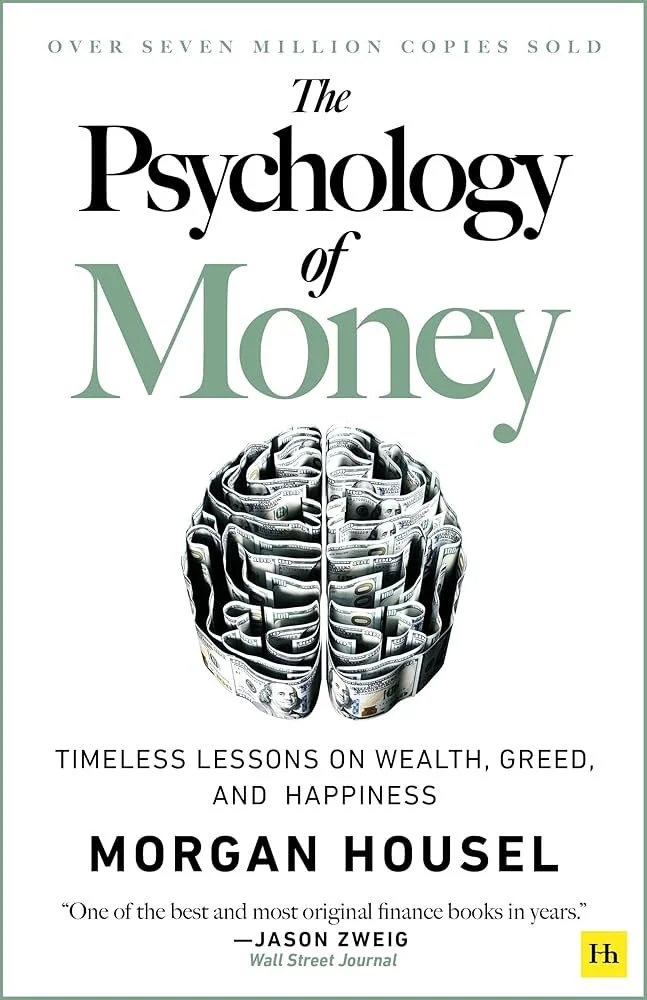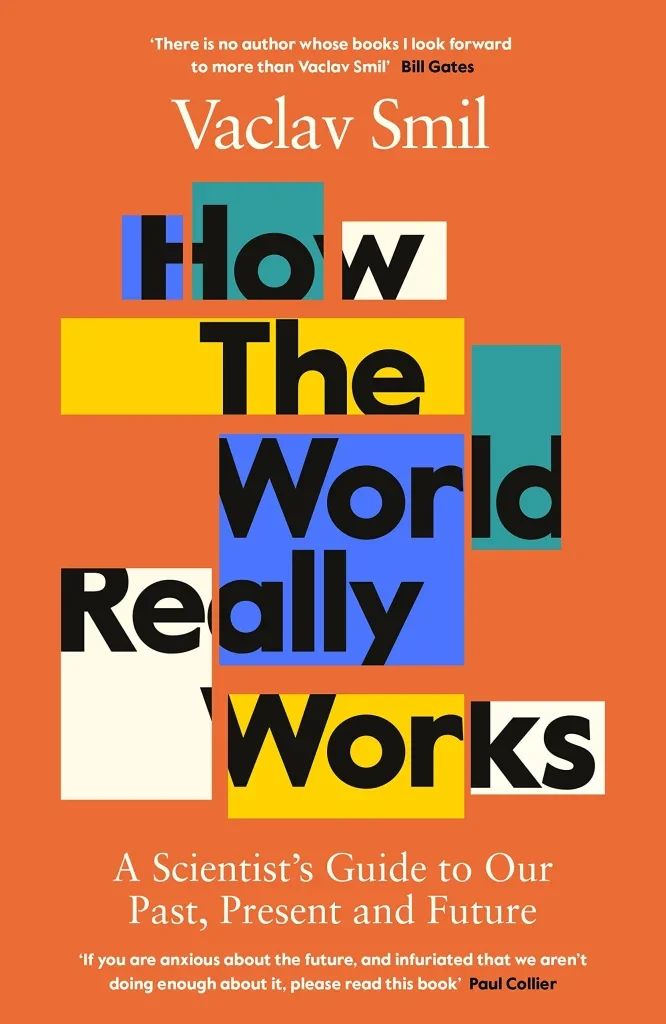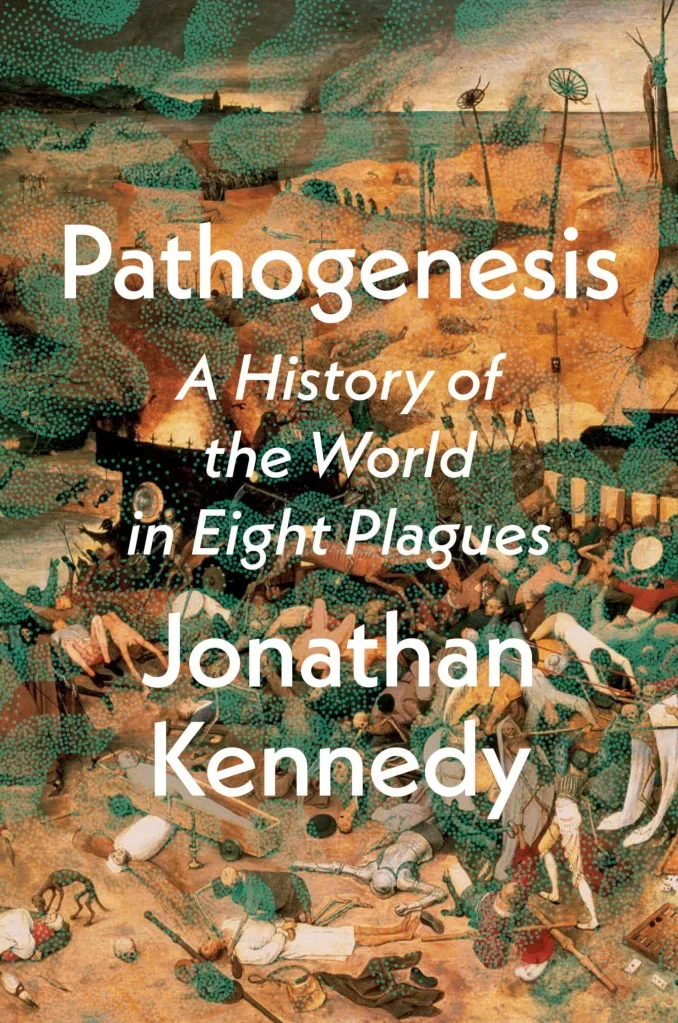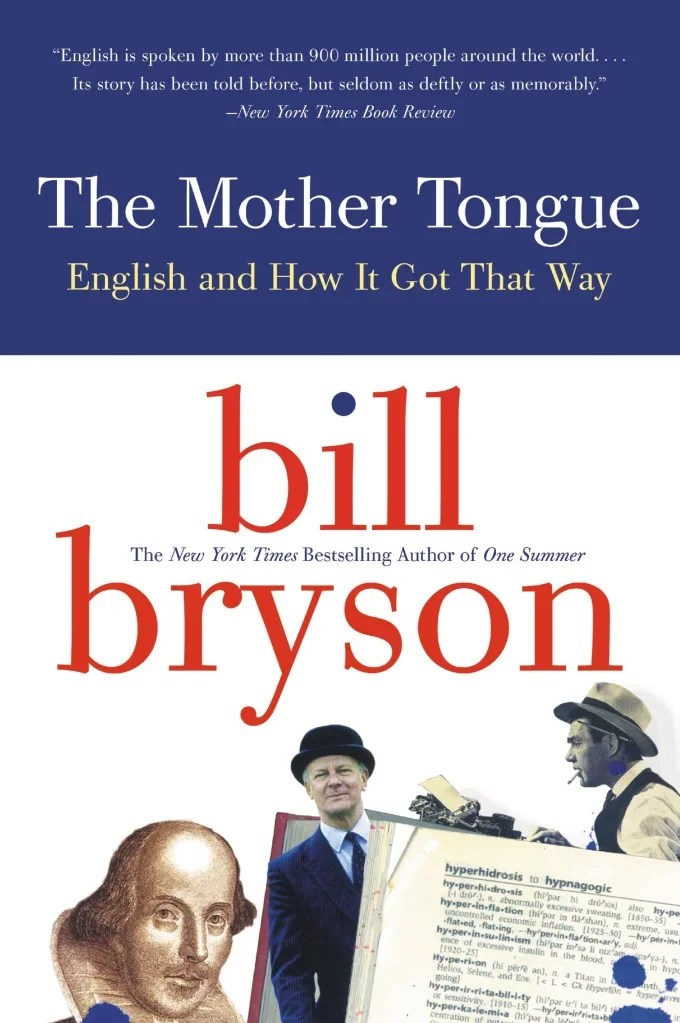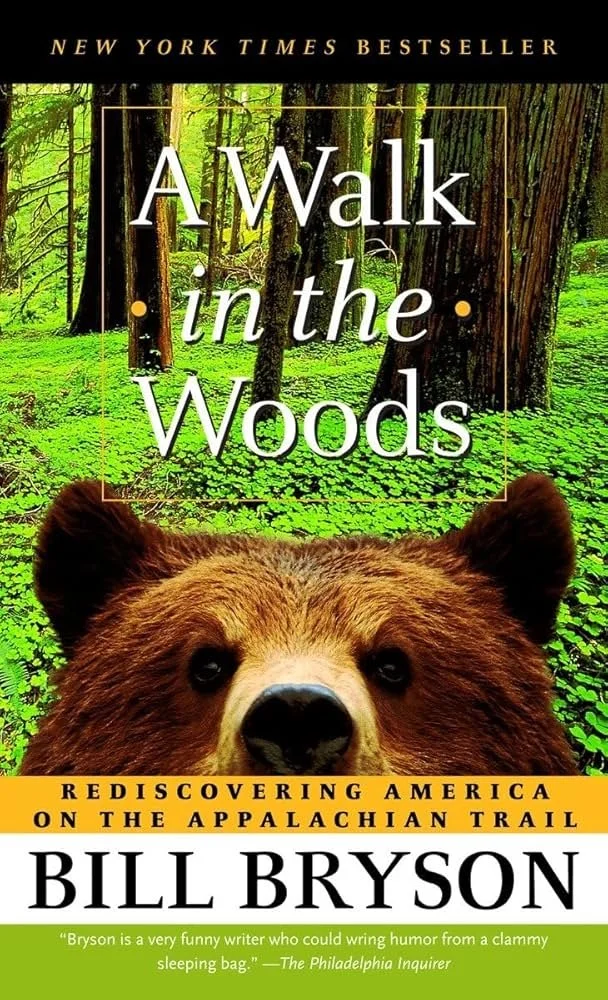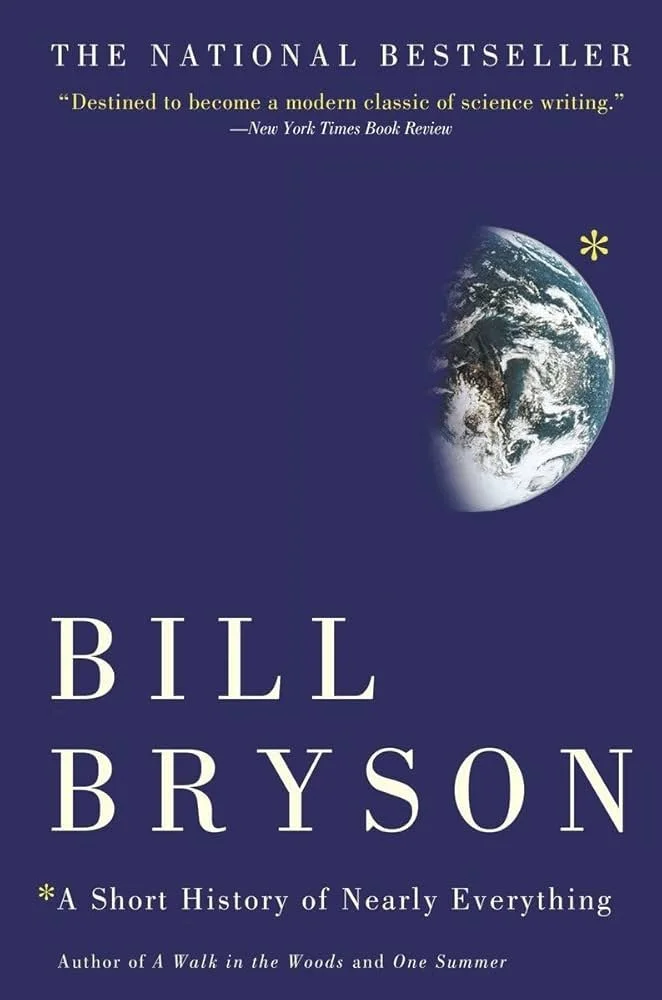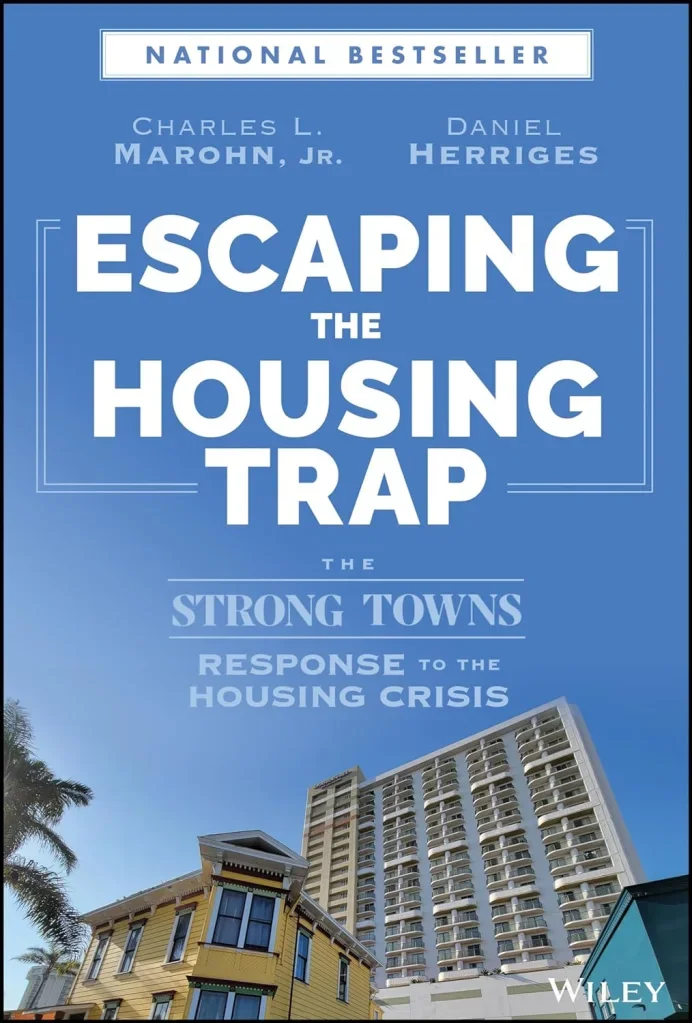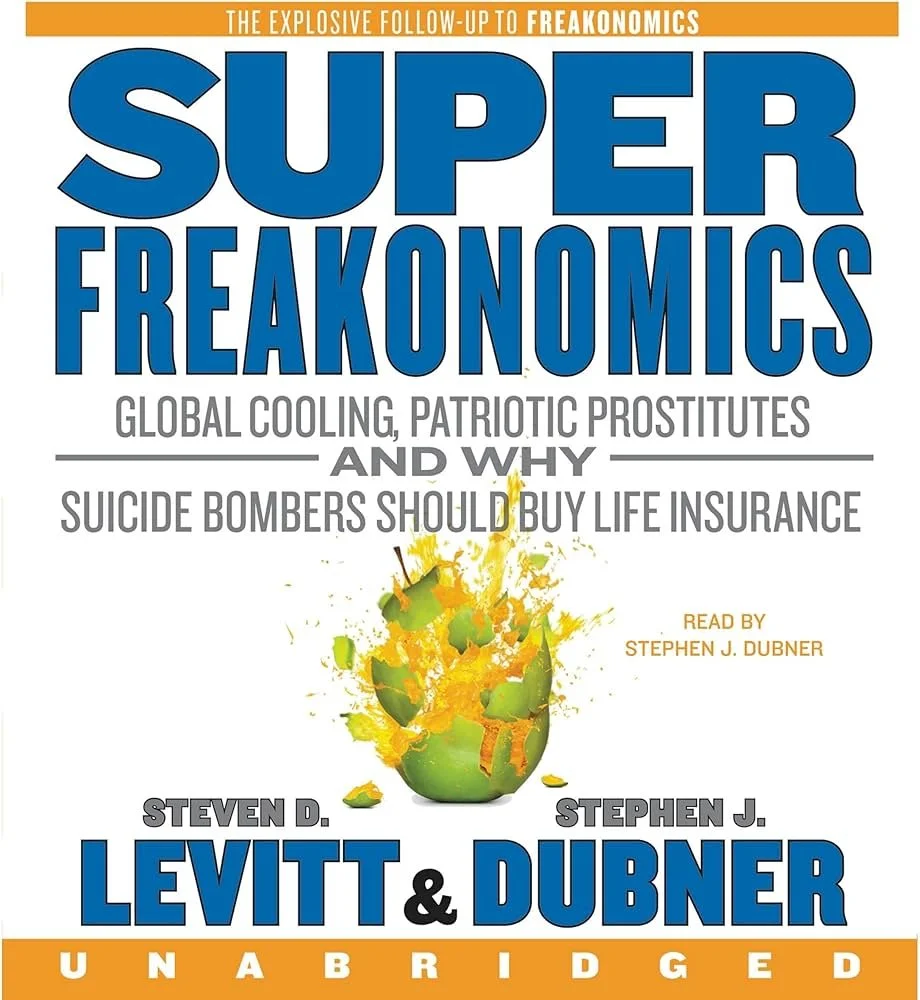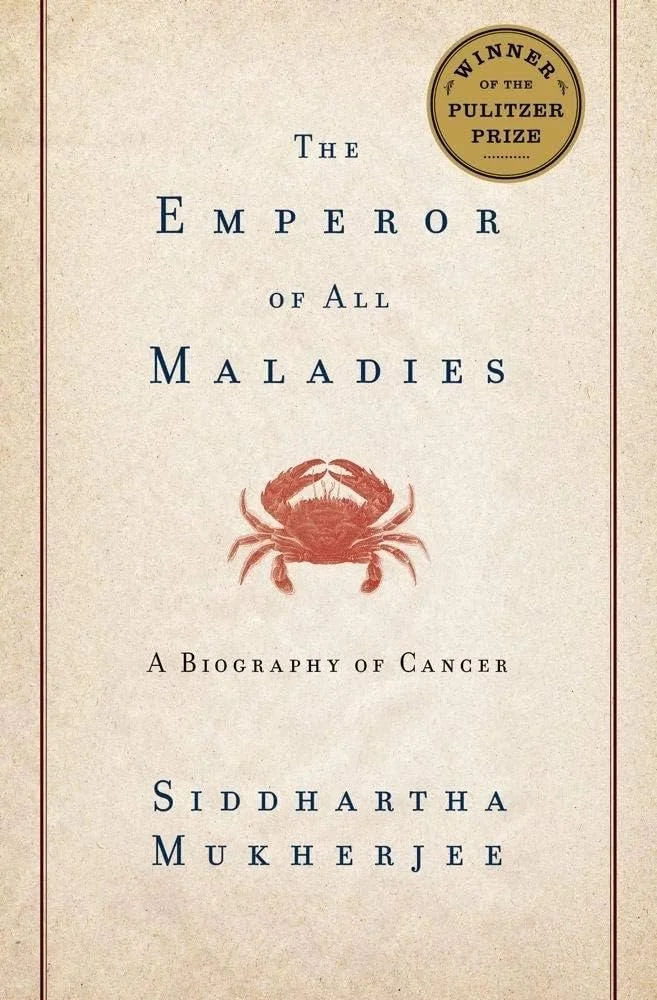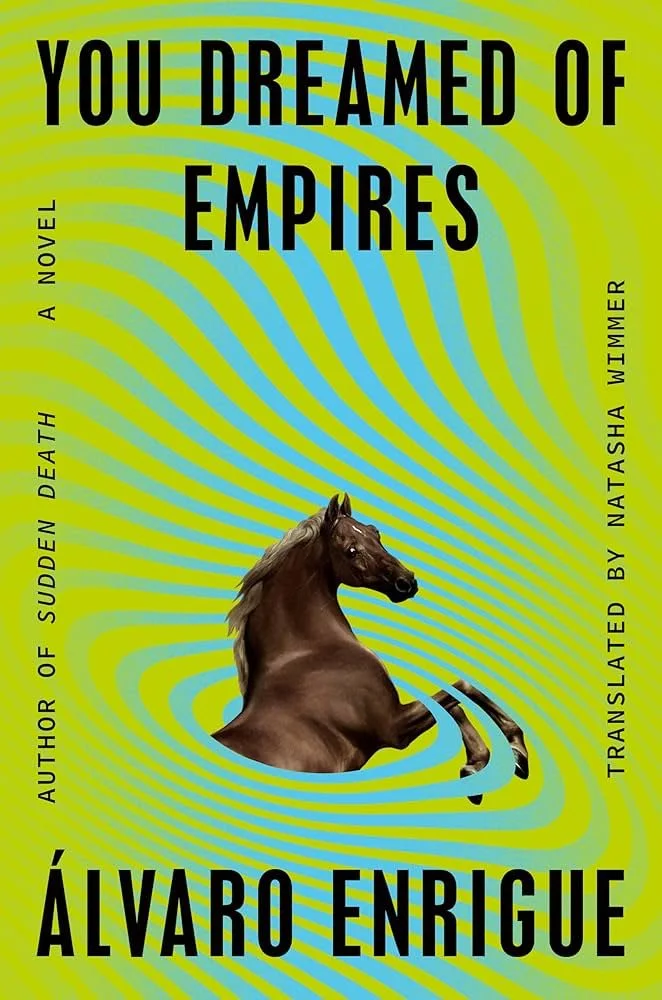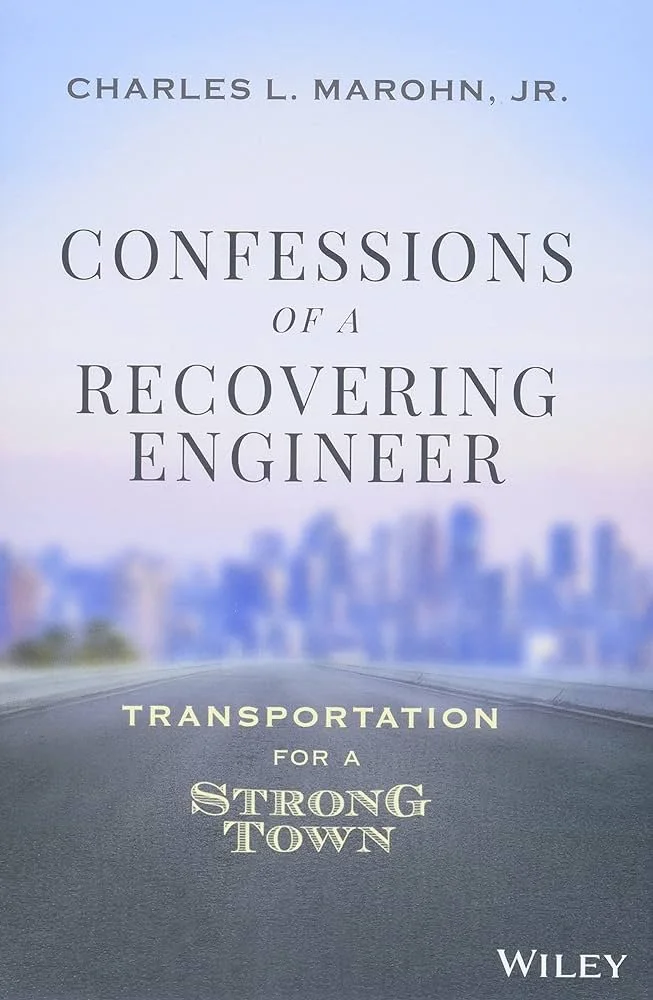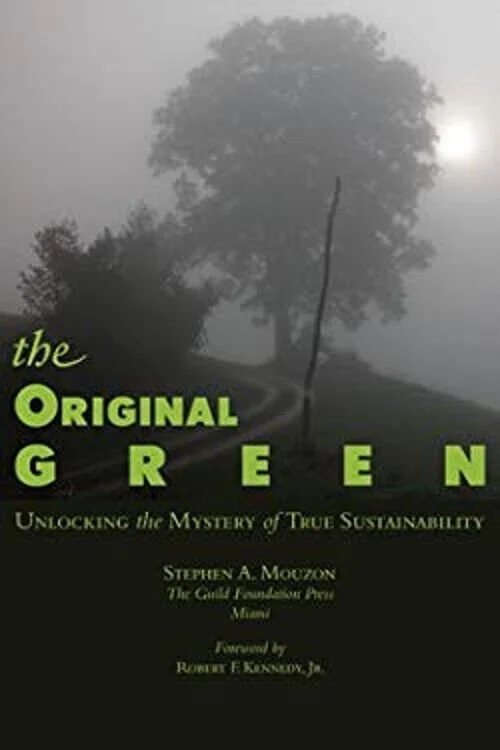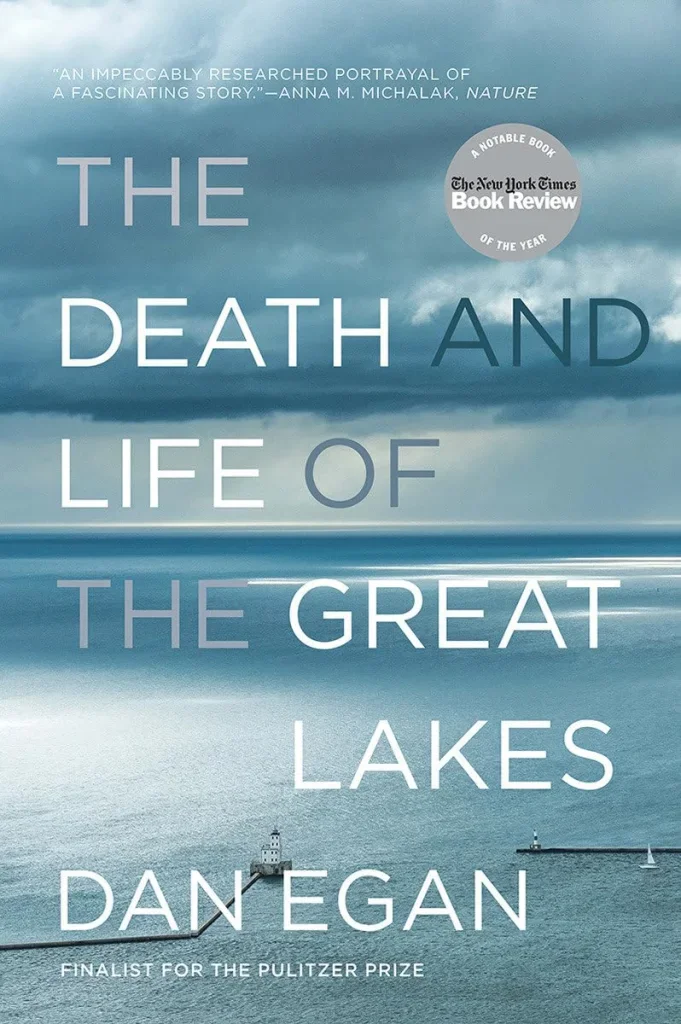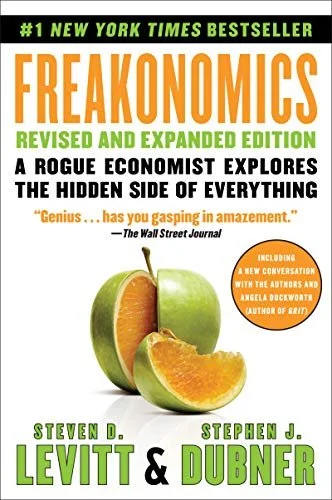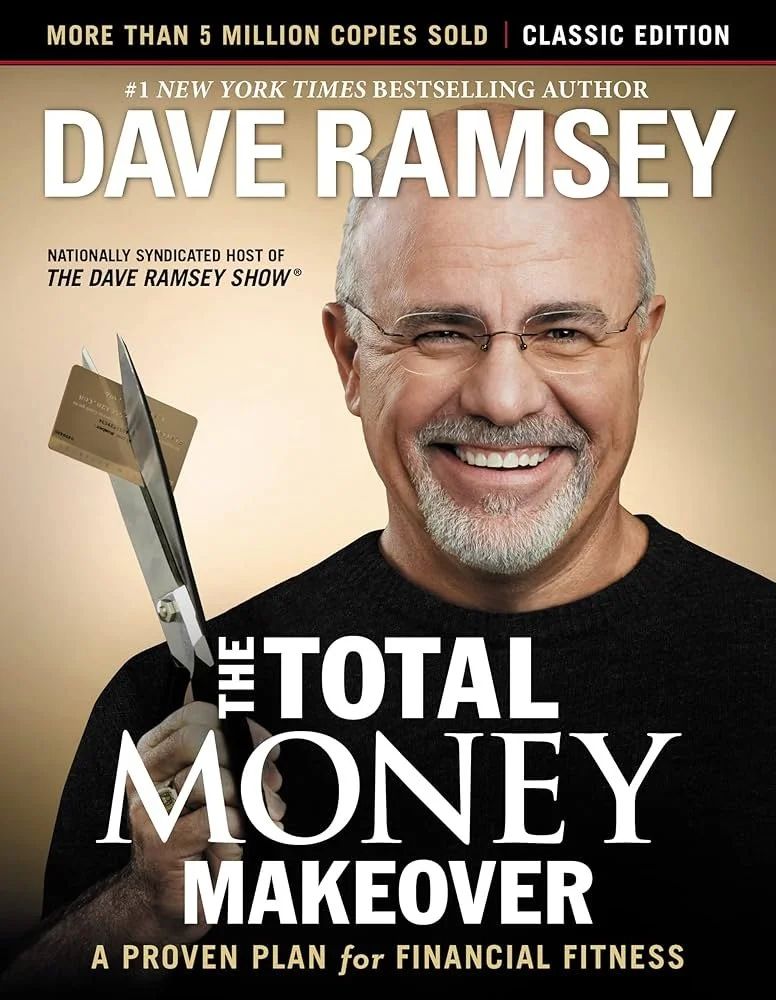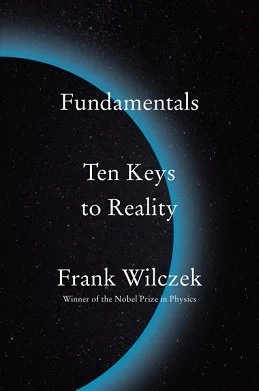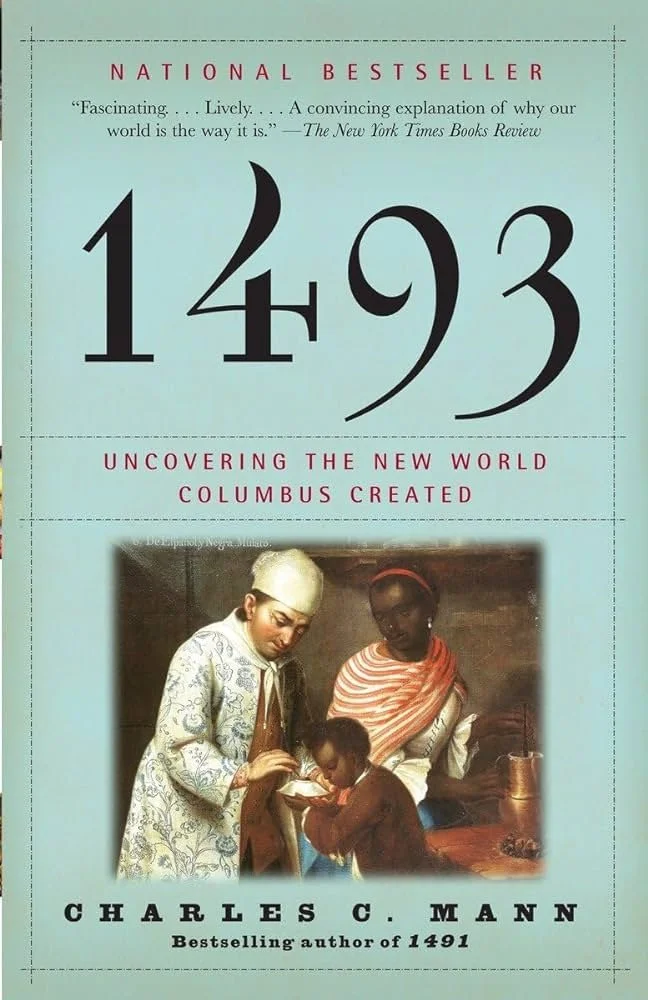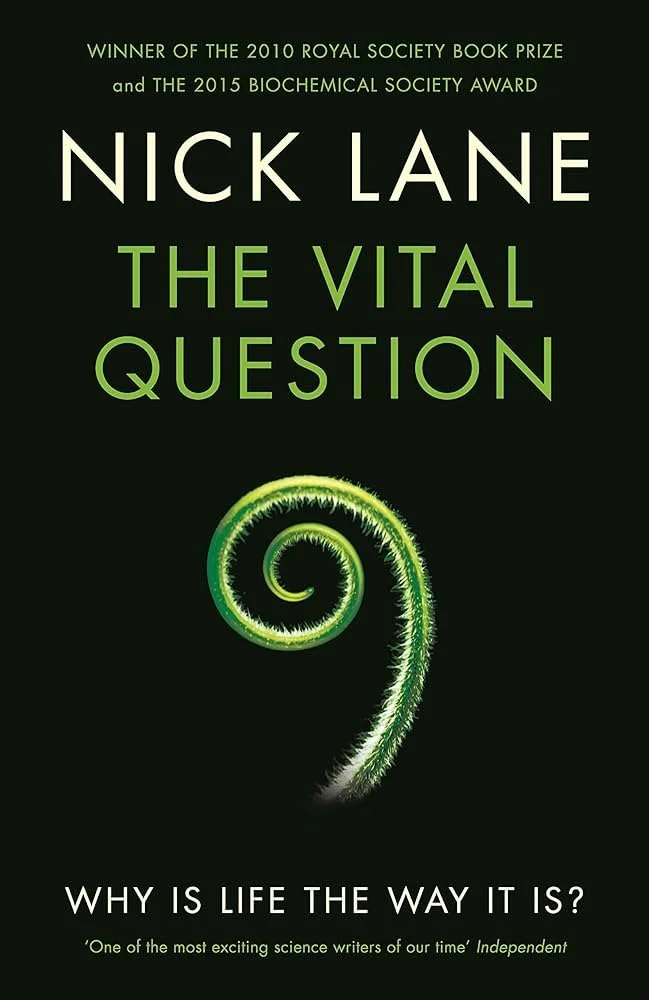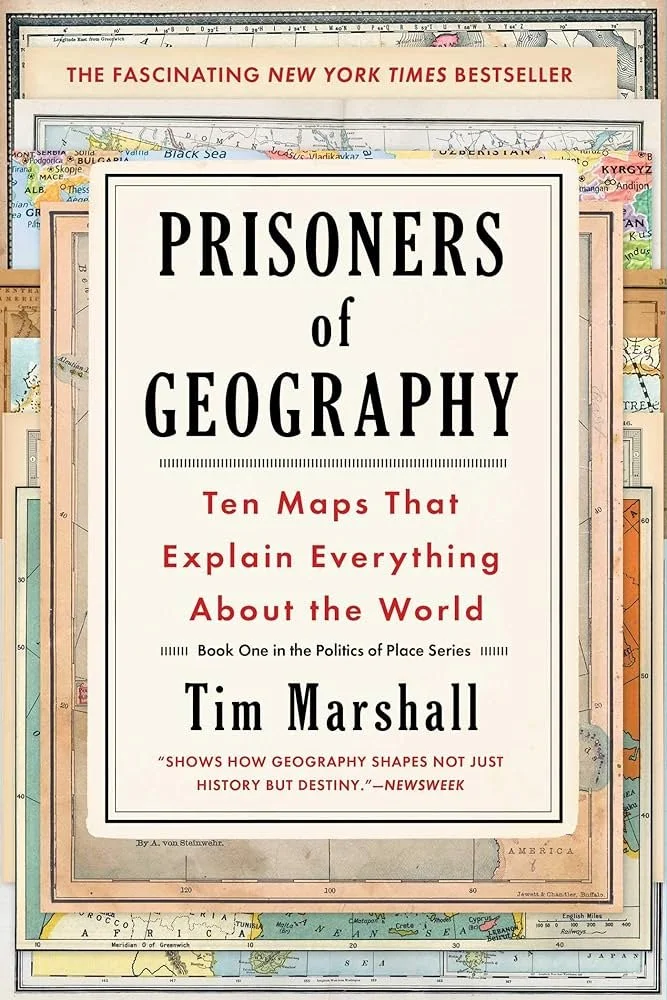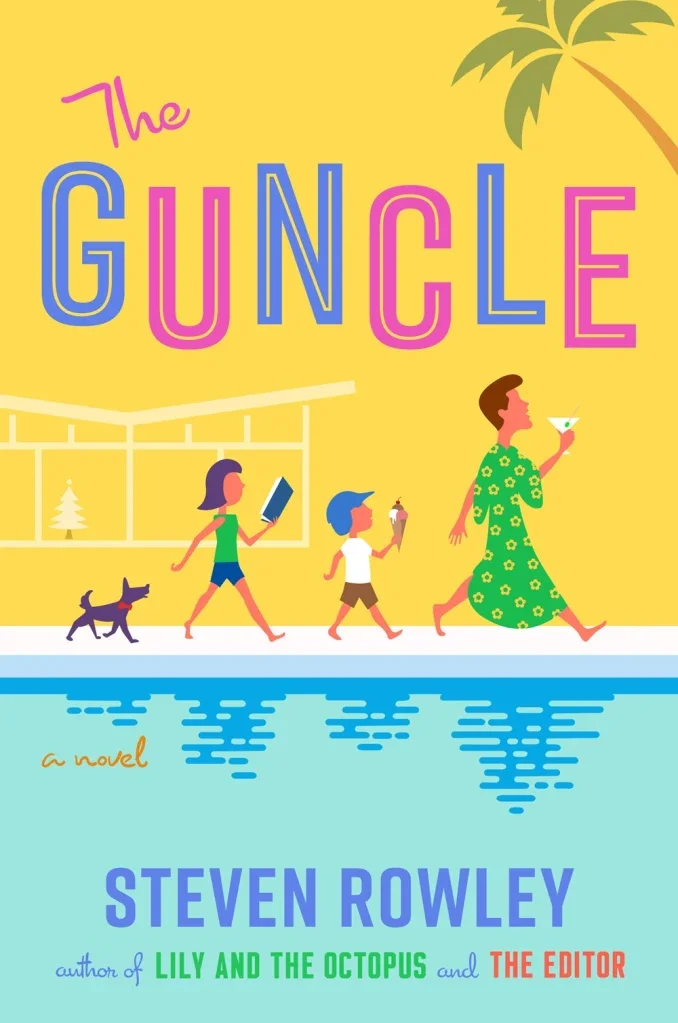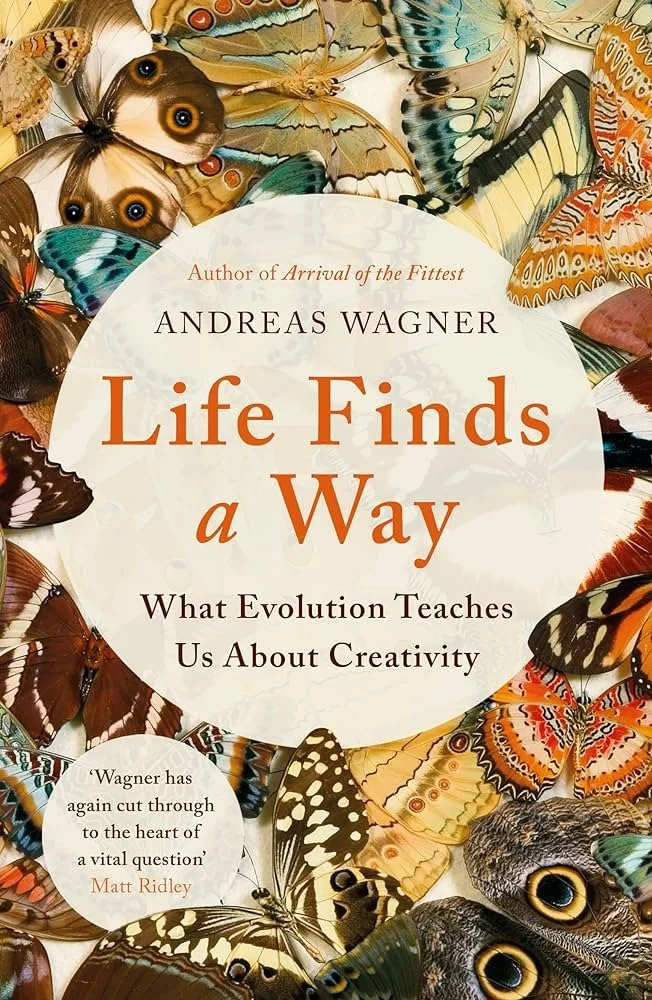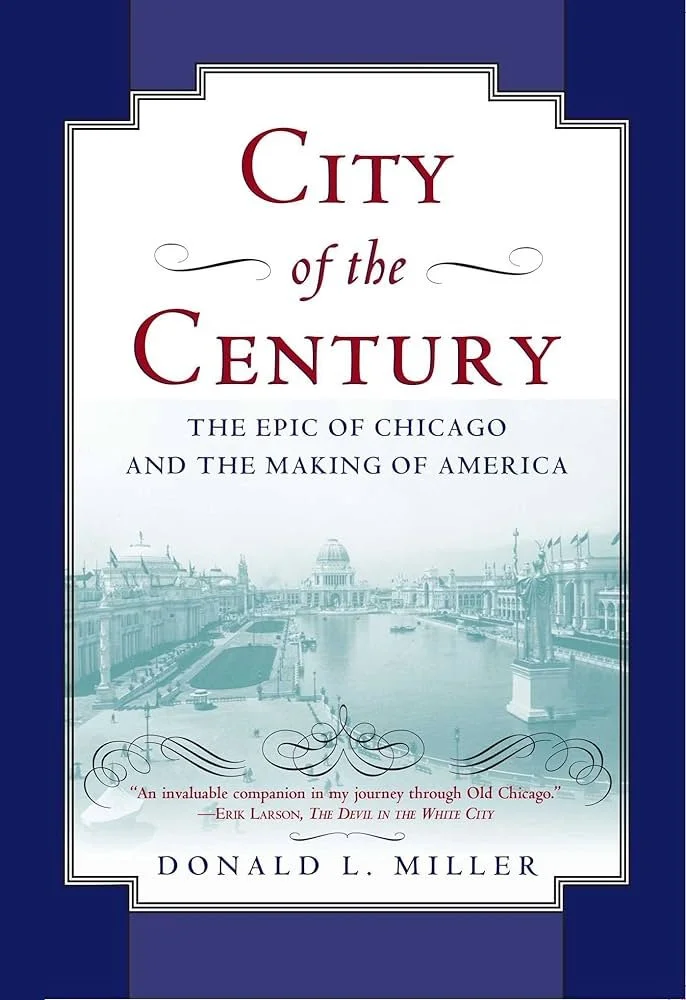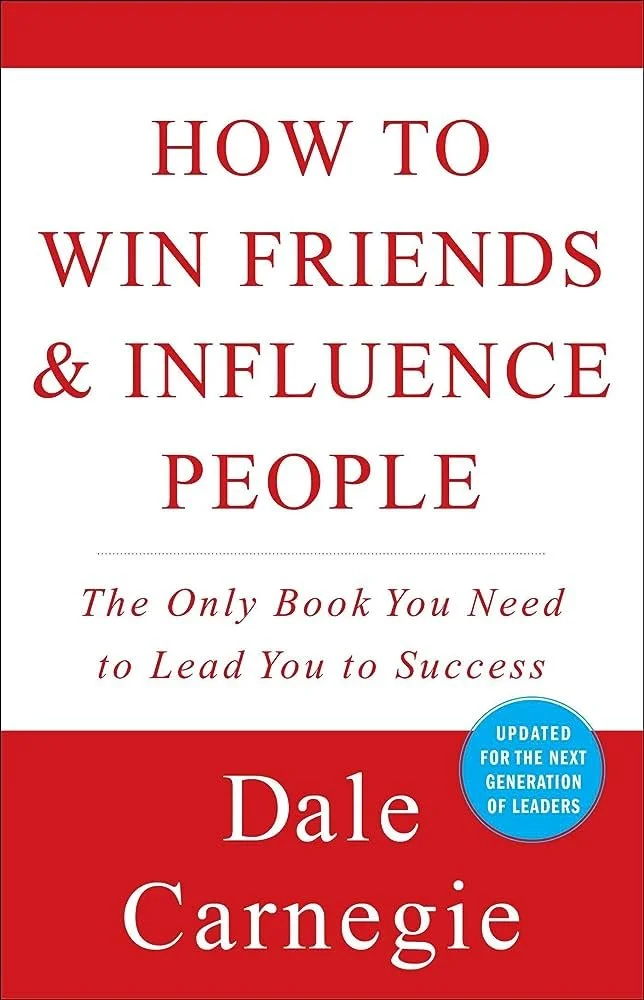books
2025 books
Doing well with money isn’t necessarily about what you know. It’s about how you behave. And behavior is hard to teach, even to really smart people.
Money―investing, personal finance, and business decisions―is typically taught as a math-based field, where data and formulas tell us exactly what to do. But in the real world people don’t make financial decisions on a spreadsheet. They make them at the dinner table, or in a meeting room, where personal history, your own unique view of the world, ego, pride, marketing, and odd incentives are scrambled together.
In The Psychology of Money, award-winning author Morgan Housel shares 19 short stories exploring the different ways people think about money and teaches you how to make better sense of one of life’s most important topics.
With dazzling wit and astonishing insight, Bill Bryson explores the remarkable history, eccentricities, resilience and sheer fun of the English language. From the first descent of the larynx into the throat (why you can talk but your dog can’t), to the fine lost art of swearing, Bryson tells the fascinating, often uproarious story of an inadequate, second-rate tongue of peasants that developed into one of the world’s largest growth industries.
2024 books
An Appalachian Tragedy Since European settlement, Appalachia’s natural history has been profoundly impacted by the people who have lived, worked, and traveled there. Beginning with the geological events that formed the mountains, Bolgiano’s journey explores the influx of settlers, Native American displacement, lumber and coal exploitation, the birth of forestry, and conservation efforts. Her research concludes that rich natural habitat and a growing interest in tourism and outdoor recreation prove the urgency in preserving connected, mature forests for the benefit of all living things in the Appalachian wilderness–including people.
The Appalachian Trail trail stretches from Georgia to Maine and covers some of the most breathtaking terrain in America–majestic mountains, silent forests, sparking lakes. If you’re going to take a hike, it’s probably the place to go. And Bill Bryson is surely the most entertaining guide you’ll find. He introduces us to the history and ecology of the trail and to some of the other hardy (or just foolhardy) folks he meets along the way–and a couple of bears. Already a classic, A Walk in the Woods will make you long for the great outdoors (or at least a comfortable chair to sit and read in).
Bill Bryson describes himself as a reluctant traveler, but even when he stays safely at home he can’t contain his curiosity about the world around him. “A Short History of Nearly Everything” is his quest to understand everything that has happened from the Big Bang to the rise of civilization – how we got from there, being nothing at all, to here, being us. The ultimate eye-opening journey through time and space, revealing the world in a way most of us have never seen it before.
Housing is an investment. Investment prices must go up. Housing is shelter. When the price of shelter goes up, people experience distress. This is the housing trap. It’s time to escape. In Escaping the Housing Trap: The Strong Towns Response to the Housing Crisis, renowned urbanists Charles (Chuck) Marohn and Daniel Herriges introduce a first-of-its-kind discussion of the tension between housing as a financial product and housing as shelter. This is the key insight that’s been missing from the Housing Crisis Conversation; and the insight that can help cities fight back against the crisis from the bottom-up. Only local change, on a neighborhood or city-wide scale, can begin to restore balance to the housing market.
Contrary to what so many Americans learn in school, the pre-Columbian Indians were not sparsely settled in a pristine wilderness; rather, there were huge numbers of Indians who actively molded and influenced the land around them. The astonishing Aztec capital of Tenochtitlan had running water and immaculately clean streets, and was larger than any contemporary European city. Mexican cultures created corn in a specialized breeding process that it has been called man’s first feat of genetic engineering. Indeed, Indians were not living lightly on the land but were landscaping and manipulating their world in ways that we are only now beginning to understand. Challenging and surprising, this a transformative new look at a rich and fascinating world we only thought we knew.
SuperFreakonomics challenges the way we think all over again, exploring the hidden side of everything with such questions as: How is a street prostitute like a department-store Santa? Why are doctors so bad at washing their hands? How much good do car seats do? What’s the best way to catch a terrorist? Which adds more value: a pimp or a Realtor? Levitt and Dubner mix smart thinking and great storytelling like no one else. By examining how people respond to incentives, they show the world for what it really is – good, bad, ugly, and, in the final analysis, super freaky.
George Washington’s Farewell Address was a prophetic letter he wrote to his fellow citizens and signed from a “parting friend,” addressing the forces he feared could destroy our democracy: hyper-partisanship, excessive debt, and foreign wars. In it, Washington called for unity among “citizens by birth or choice,” advocated moderation, defended religious pluralism, proposed a foreign policy of independence (not isolation), and proposed that education is essential to democracy. He established the precedent for the peaceful transfer of power.
Once celebrated as civic scripture, more widely reprinted than the Declaration of Independence, the Farewell Address is now almost forgotten. Yet its message remains starkly relevant today. In Washington’s Farewell, John Avlon offers a stunning portrait of our first president and his battle to save America from self-destruction.
Sasha Sagan was raised by secular parents, the astronomer Carl Sagan and the writer and producer Ann Druyan. They taught her that the natural world and vast cosmos are full of profound beauty, and that science reveals truths more wondrous than any myth or fable.
When Sagan herself became a mother, she began her own hunt for the natural phenomena behind our most treasured occasions–from births to deaths, holidays to weddings, anniversaries, and more–growing these roots into a new set of rituals for her young daughter that honor the joy and significance of each experience without relying on a religious framework. As Sagan shares these rituals, For Small Creatures Such as We becomes a moving tribute to a father, a newborn daughter, a marriage, and the natural world–a celebration of life itself, and the power of our families and beliefs to bring us together.
We have never had so much information at our fingertips and yet most of us don’t know how the world really works. This book explains seven of the most fundamental realities governing our survival and prosperity. From energy and food production, through our material world and its globalization, to risks, our environment and its future. In this ambitious and thought-provoking book we see, for example, that globalization isn’t inevitable and that our societies have been steadily increasing their dependence on fossil fuels, making their complete and rapid elimination unlikely. Drawing on the latest science and tackling sources of misinformation head on – from Yuval Noah Harari to Noam Chomsky – ultimately Smil answers the most profound question of our age: are we irrevocably doomed or is a brighter utopia ahead?
Drawing on the latest research in fields ranging from genetics and anthropology to archaeology and economics, Pathogenesis takes us through sixty thousand years of history, exploring eight major outbreaks of infectious disease that have made the modern world. Bacteria and viruses were protagonists in the demise of the Neanderthals, the growth of Islam, the transition from feudalism to capitalism, the devastation wrought by European colonialism, and the evolution of the United States from an imperial backwater to a global superpower. Even Christianity rose to prominence in the wake of a series of deadly pandemics that swept through the Roman Empire in the second and third centuries: Caring for the sick turned what was a tiny sect into one of the world’s major religions.
The story of cancer is a story of human ingenuity, resilience, and perseverance, but also of hubris, paternalism, and misperception. Mukherjee recounts centuries of discoveries, setbacks, victories, and deaths, told through the eyes of his predecessors and peers, training their wits against an infinitely resourceful adversary that, just three decades ago, was thought to be easily vanquished in an all-out “war against cancer.” The book reads like a literary thriller with cancer as the protagonist. Riveting, urgent, and surprising, The Emperor of All Maladies provides a fascinating glimpse into the future of cancer treatments. It is an illuminating book that provides hope and clarity to those seeking to demystify cancer.
One morning in 1519, conquistador Hernán Cortés enters the city of Tenochtitlan – today’s Mexico City. Later that day, he will meet the emperor Moctezuma in a collision of two worlds, two empires, two languages, two possible futures. Cortés is accompanied by his captains, his troops, his prized horses, and his two translators: Friar Aguilar, a taciturn friar, and Malinalli, an enslaved, strategic Nahua princess. As they await their meeting with the emperor – who is at a political and spiritual crossroads, and relies on hallucinogens to get by – Cortés and his entourage are ensconced in the labyrinthine palace. Soon, one of Cortés’s captains, Jazmín Caldera begins to question the ease with which they were welcomed into the city, and wonders at the chances of getting out alive, much less conquering the empire.
From flying squirrels to grizzly bears, and from torpid turtles to insects with antifreeze, the animal kingdom relies on some staggering evolutionary innovations to survive winter. Unlike their human counterparts, who must alter the environment to accommodate physical limitations, animals are adaptable to an amazing range of conditions. Examining everything from food sources in the extremely barren winter land-scape to the chemical composition that allows certain creatures to survive, Heinrich’s Winter World awakens the largely undiscovered mysteries by which nature sustains herself through winter’s harsh, cruel exigencies.
This important book shows (1) the values of the transportation professions, how they are applied in the design process, and how those priorities differ from those of the public (2) How the standard approach to transportation ensures the maximum amount of traffic congestion possible is created each day, and how to fight that congestion on a budget (3) Bottom-up techniques for spending less and getting higher returns on transportation projects, all while improving quality of life for residents. This book is perfect for anyone interested in why transportation systems work – and fail to work – the way they do.
The Original Green is the sustainability our ancestors knew by heart. Originally (before the Thermostat Age) they had no choice but to build green, otherwise people would not survive very long. The Original Green aggregates and distributes the wisdom of sustainability through the operating system of living traditions, producing sustainable places in which it is meaningful to build sustainable buildings. Original Green sustainability is common-sense and plain-spoken, meaning “keeping things going in a healthy way long into an uncertain future
No one, since the days of the great Arab travelers, has described so much of the known world as Jan Morris. Considered by many the preeminent travel writer of our age, she now offers this retrospective selection of her best writings. Including 37 pieces, several of which have never appeared in book form before, these essays cover Morris’ entire career from the 1950s to the present, spanning the globe from China to Peru, from Beirut to Houston, and from Leningrad to Manhattan. Writing with elegance, passion, and wit, she captures the complex personality of each city, whether familiar or exotic.
The Great Lakes―Erie, Huron, Michigan, Ontario, and Superior―hold 20 percent of the world’s supply of surface fresh water and provide sustenance, work, and recreation for tens of millions of Americans. But they are under threat as never before, and their problems are spreading across the continent. The Death and Life of the Great Lakes is prize-winning reporter Dan Egan’s compulsively readable portrait of an ecological catastrophe happening right before our eyes, blending the epic story of the lakes with an examination of the perils they face and the ways we can restore and preserve them for generations to come.
To some, 1968 was the year of sex, drugs, and rock and roll. Yet it was also the year of the Martin Luther King, Jr., and Bobby Kennedy assassinations; the riots at the Democratic National Convention in Chicago; Prague Spring; the antiwar movement and the Tet Offensive; Black Power; the generation gap; avant-garde theater; the upsurge of the women’s movement; and the beginning of the end for the Soviet Union. In this monumental book, Mark Kurlansky brings to teeming life the cultural and political history of that pivotal year, when television’s influence on global events first became apparent, and spontaneous uprisings occurred simultaneously around the world. Encompassing the diverse realms of youth and music, politics and war, economics and the media…
In this lively and illuminating discussion of his landmark research, esteemed primatologist Frans de Waal argues that human morality is not imposed from above but instead comes from within. Moral behavior does not begin and end with religion but is in fact a product of evolution. Now he delivers fascinating fresh evidence for the seeds of ethical behavior in primate societies that further cements the case for the biological origins of human fairness. Interweaving vivid tales from the animal kingdom with thoughtful philosophical analysis, de Waal seeks a bottom-up explanation of morality that emphasizes our connection with animals.
Taking a group of artists — a painter, a poet, a chef, a composer, and a handful of novelists — Lehrer shows how each one discovered an essential truth about the mind that science is only now rediscovering. We learn, for example, how Proust first revealed the fallibility of memory; how George Eliot discovered the brain’s malleability; how the French chef Escoffier discovered umami (the fifth taste); how Cézanne worked out the subtleties of vision; and how Gertrude Stein exposed the deep structure of language — a full half-century before the work of Noam Chomsky and other linguists.
A bold, provocative history of our species finds the roots of civilization’s success and failure in our evolutionary biology. For evolutionary biologists Heather Heying and Bret Weinstein, the cause of our woes is clear: the modern world is out of sync with our ancient brains and bodies. We evolved to live in clans, but today most people don’t even know their neighbors’ names. Survival in our earliest societies depended on leveraging the advantages of our sex differences, but today even the concept of biological sex is increasingly dismissed as offensive. The cognitive dissonance spawned by trying to live in a society we’re not built for is killing us.
Second only to the human brain in its complexity, it is one of the oldest and most critical facets of life on Earth. Without it, you would die within days. In Immune, Philipp Dettmer, the brains behind the most popular science channel on YouTube, takes readers on a journey through the fortress of the human body and its defenses. There is a constant battle of staggering scale raging within us, full of stories of invasion, strategy, defeat, and noble self-sacrifice. In fact, in the time you’ve been reading this, your immune system has probably identified and eradicated a cancer cell that started to grow in your body.
Freakonomics is a groundbreaking collaboration between Levitt and Stephen J. Dubner, an award-winning author and journalist. They set out to explore the inner workings of a crack gang, the truth about real estate agents, the secrets of the Ku Klux Klan, and much more.
Through forceful storytelling and wry insight, they show that economics is, at root, the study of incentives—how people get what they want or need, especially when other people want or need the same thing
The Total Money Makeover: Classic Edition will give you the tools and the encouragement you need to: (1) Design a sure-fire plan for paying off all debt–from your cars to your home and everything in between using the debt snowball method. (2) Break bad habits and make lasting changes when it comes to your relationship with money. (3) Recognize the 10 most dangerous money myths. (4) Secure a healthy nest egg for emergencies and set yourself up for retirement. (5) Become financially healthy for life. (6) Live like no one else, so later you can LIVE (and GIVE) like no one else!
In Fundamentals, Nobel laureate Frank Wilczek offers the reader a simple yet profound exploration of reality based on the deep revelations of modern science. With clarity and an infectious sense of joy, he guides us through the essential concepts that form our understanding of what the world is and how it works. Through these pages, we come to see our reality in a new way–bigger, fuller, and stranger than it looked before.
2023 books
“1493” is a bracingly persuasive counternarrative to the prevailing mythology about the historical significance of the “discovery” of America. Summarizing a generation’s worth of scholarship on the complex effects of the mingling of the “old” and “new” worlds, “1493” carries on this line of inquiry by illuminating the political, cultural and biological ramifications of what Mann refers to as the “homogenocene” — the resurrection of Pangaea, the supercontinent, connected this time not by the slow grinding power of geology but by the sinews of commerce.
In his view as a biochemist, the core question is about energy, as all cells handle energy in the same way, relying on a steep electrochemical gradient across the very small thickness of a membrane in a cell – to power all the chemical reactions of life. The electrical energy is transformed into forms that the cell can use by a chain of energy-handling structures including ancient proteins such as cytochromes, ion channels, and the enzyme ATP synthase, all built into the membrane. Once evolved, this chain has been conserved by all living things, showing that it is vital to life. He argues instead that life began in deep-sea hydrothermal vents, as these contain chemicals that effectively store energy that cells could use, as long as the cells provided a membrane to generate the needed gradient by maintaining different concentrations of chemicals on either side.
Prisoners of Geography: Ten Maps That Explain Everything About the World, by Tim Marshall, was published in 2015 and became a New York Times bestseller and a Sunday Times #1 bestseller. The book describes how geography—mountains, plains, rivers, coastlines, climate, and natural resources—shape the fate of nations. Each chapter explains geography’s effects on a particular country or region. The book also considers how other influences—religion, culture, language, ethnicity—interact with local geography.
Patrick O’Hara has always loved his niece, Maisie, and nephew, Grant — from a safe distance. His Palm Springs home and reclusive lifestyle aren’t exactly welcoming to children. But when tragedy strikes, Patrick finds himself suddenly taking on the role of primary guardian. Patrick has no idea what to expect, having spent years barely holding on after the loss of his own great love and managing a stalled career. He regrets his decision to take them in, until he starts to recognize that his outsize lifestyle and unusual life wisdom could bring about a season of healing that redefines their understanding of family, and finally lead Patrick back to himself.
Widely considered a jewel of contemporary travel literature, Equator is Thurston Clarke’s magnificent, witty account of his solo journey along the Earth’s torrid midsection—a grueling, 25,000-mile odyssey that spanned three years and four continents. His was a perilous trek across an almost surreal landscape—where a first-class hotel appeared in the middle of a leper colony and a one-time Pacific island paradise stood as a hideous bomb-blasted testament to nuclear folly. Along the way Clarke encountered the world’s heaviest rat, the Earth’s highest volcano, and the king of a Micronesian island wearing flip-flops and a novelty t-shirt. Throughout, Clarke’s unflagging sense of humor and wonder make Equator a classic of its kind.
Presenting the foundational ideas of the Strong Towns movement he co founded, Charles Marohn explains why cities of all sizes continue to struggle to meet their basic needs, and reveals the new paradigm that can solve this longstanding problem.
The book explains how growth and development has been the conventional response to urban financial struggles―and why it just doesn’t work. New development and high risk investing don’t generate enough wealth to support itself, and cities continue to struggle. Read this book to find out how cities large and small can focus on bottom up investments to minimize risk and maximize their ability to strengthen the community financially and improve citizens’ quality of life.
In his 2012 book, Walkable City, Jeff Speck, contends that a great deal of money and muscle have gone into streetscape improvements, but how important are these in convincing people to walk? The book is rooted in Speck’s ‘General Theory of Walkability’, that for walking to be favored, it must be useful, safe, comfortable and interesting. 1.Useful: Most aspects of daily life close at hand and well-organized 2.Safe: Streets that are designed to be safe and also feel safe to pedestrians 3.Comfortable: Urban streets as outdoor living rooms 4.Interesting: Sidewalks lined by unique buildings with friendly faces
In Life Finds a Way, biologist Andreas Wagner reveals the deep symmetry between innovation in biological evolution and human cultural creativity. Rarely is either a linear climb to perfection–instead, “progress” is typically marked by a sequence of peaks, plateaus, and pitfalls. For instance, in Picasso’s forty-some iterations of Guernica, we see the same combination of small steps, incessant reshuffling, and large, almost reckless, leaps that characterize the way evolution transformed a dinosaur’s grasping claw into a condor’s soaring wing. By understanding these principles, we can also better realize our own creative potential to find new solutions to adversity.
Donald Miller’s powerful narrative embraces it all: Chicago’s wild beginnings, its reckless growth, its natural calamities (especially the Great Fire of 1871), its raucous politics, its empire-building businessmen, its world-transforming architecture, its rich mix of cultures, its community of young writers and journalists, and its staggering engineering projects—which included the reversal of the Chicago River and raising the entire city from prairie mud to save it from devastating cholera epidemics. The saga of Chicago’s unresolved struggle between order and freedom, growth and control, capitalism and community, remains instructive for our time, as we seek ways to build and maintain cities that retain their humanity without losing their energy.
The book emphasizes the importance of showing genuine interest in others, listening actively, and making others feel important and appreciated. It also suggests that to influence others, one should avoid arguments, admit mistakes, and let others take credit for ideas or work.
